Telling someone you’re traveling during an Icelandic winter elicits incredulous responses ranging from, “Hold up. Isn’t Iceland dark for six months?” to “Wow, that’s crazy. Guess you’ll need Arctic gear to stay warm, right?”
Despite popular belief, Icelandic winters aren’t bitterly cold. If you look at the weather in regions of the United States like the Northeast and Canada, Iceland might even look warm in comparison. Average temperatures usually hover between the low 20s and high 30s during the height of winter. However, you can expect winter to stretch from mid-October to April and arrive with its unique Icelandic challenges.
How are Icelandic winters not frigid? Despite Iceland’s location near the Arctic, it’s also located on the Gulfstream that keeps weather manageable with some preparation. Although winter months experience short days with just hours of daylight, it’s also not dark 24-hours a day in Iceland. The darkness can aggravate the cold weather but also provides a magical backdrop for festivals, holiday lights, and the Northern Lights.
I’m not the only one who loves an Icelandic winter. When Happy Camper pulled their Facebook followers, they discovered that 60% of people preferred traveling during winter than at any other time of year. However, it’s not all fun and games. Iceland’s winter weather is quirky and requires some mindset preparation and the right gear.
Watch Out for Wind, Rain, and Ice
Icelandic winters may not experience sub-zero temperatures that require snowshoes to function, but the whipping wind and rain can feel brutal. Weather is also unpredictable and changes quickly. Icelanders are used to the changes and come prepared with layers and take their time on the roads. Yet visitors aren’t always aware that a chilly sunny morning can turn to windy rain pretty quickly in Iceland.
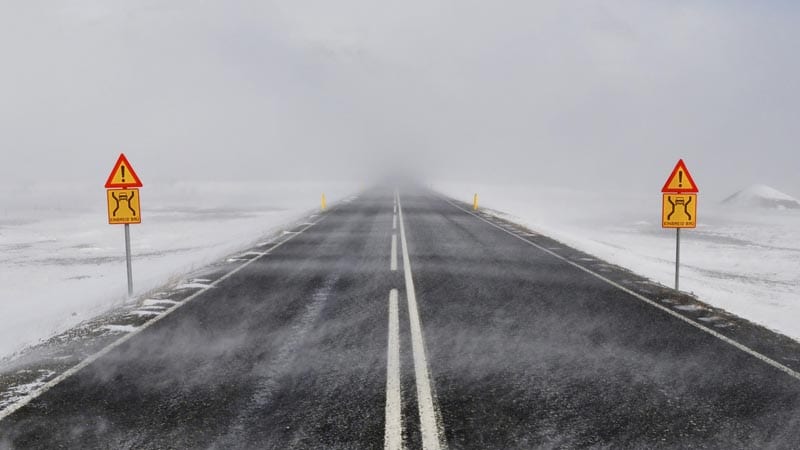
Despite the name, Iceland isn’t covered in ice the way Greenland is during wintertime. However, roads do ice up and pose issues. Iceland’s Ring Road, Route 1, circles the country and is mostly paved and usually easy to navigate. During a blustery Icelandic winter, roads can get icy as winds and rain roll across the plains. It may take you hours to get just a few miles during inclement weather, and some parts of the road may become impassable.
A heavy day of snow, rain, and wind can be dangerous and is the time to stay off the roads and settle in at your campground or hang-out in Reykjavik. Regardless of the weather, you should still expect to have a good time and find plenty to do in Iceland’s winter wonderland.
Come Excessively and Obsessively Prepared
While we’re on the topic of snow, rain, and ice, let’s also talk about preparation. Make sure your rental car or camper comes equipped with a GPS tracking system in case of an emergency. If you rent with Happy Campers, your vehicle is already outfitted with a GPS so the team can find your exact location and help fix the issue. Happy Camper also provides a 24/7 emergency number to call so they can help you find a solution to get you to safety.

A quality heater is a must, and Happy Camper provides a Webasto heater for cold winter nights. They also include a Winter Kit for winter camping with high-quality sleeping bags, free WiFi to stay in touch and monitor the weather, a self-guided winter lesson, tips during check-in, and even a hot plate. You can cook right inside your Happy Camper and stay full and warm during your winter adventure.
Have you noticed that there’s something about the cold that makes us forget about many of the basics? Bring extra water in a container or thermos that won’t freeze, apply sunscreen generously if you’re going out hiking, and keep a first aid kit on hand. It’s also wise to let your travel companions know if you’re venturing out alone and when you expect to return so they can raise the alarm if you’re delayed.
Learn to Love Layers
When it comes to traveling during an Icelandic winter, layers are your new best friends. Arm yourself with endless layers and focus on a thin base, followed by something heavy. Skip the cotton altogether and pull on quick wick socks and undergarments followed by warm, comfortable wool that won’t make you itch. Add a down parka or high-waisted snow pants if you plan to do some hiking.
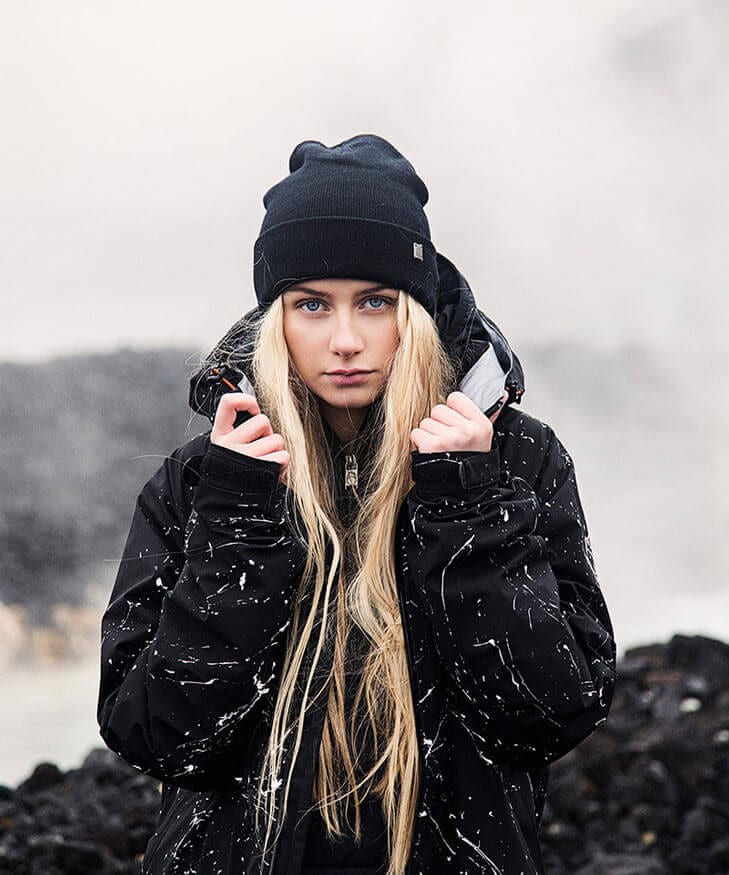
You’re also going to need layers for your layers. Bring along an extra set of socks and shirts in a backpack in case you need something dry in a hurry. You also end up with a valuable extra layer in case the weather is colder than you expect.
Adapt as You Go
If you get to know a few Icelanders during your journey, you’ll probably notice a recurring theme. They’re historically adaptable to seemingly any situation. After centuries of isolation, Icelanders are as tough as they are helpful, self-reliant, fiercely independent, and up for a challenge while keeping an eye on their 350,000 neighbors.
Take their cue and be okay with adapting to the Icelandic winter as you go. You can prepare but not wholly predict what the weather will do on any given day. Letting icy roads or a snowstorm unhinge you won’t do much good. Decide to take a rest, warm-up some coffee, talk with your travel companions or read a good book while plotting your next adventure.
Embrace the Icelandic Winter Season
You’ve gotten an enthusiastic, yet totally necessary, rundown on precautions and preparations for handling an Icelandic winter. Now it’s time to focus on all of the fantastic pros of visiting Iceland during those long winter months. Iceland is absolutely stunning during winter with unique, snow-capped landscapes and lively festivals.
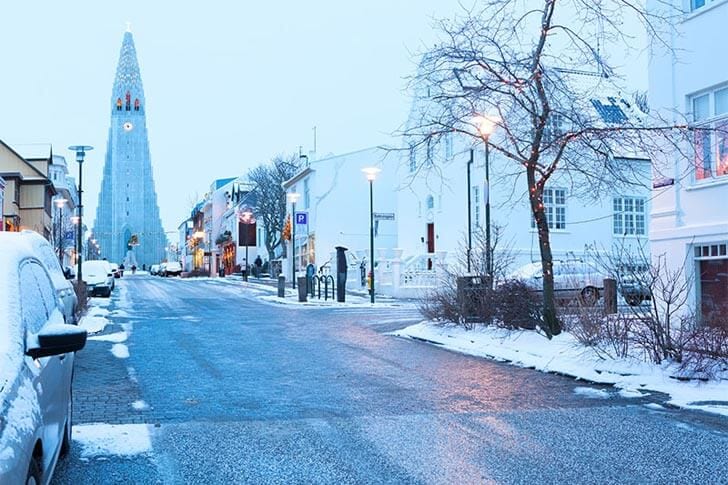
Look for the Twelfth Night Celebration, Icelandic Beer Festival, Winter Lights Festival, and so many more winter festivals around Iceland. Each celebration involves embracing the cold outdoors as part of the magic of the season. Icelanders don’t let a little cold keep them from celebrating and warming up with ale, and neither should you. Of course, if the conditions are so hazardous that you actually see Icelanders heading indoors, then you should follow their cue, too.
See the Northern Lights
When the air is cold, and the sky is clear, you might be lucky enough to see the Northern Lights illuminating the sky. A full moon or cloudy evening is not your friend when hunting the Northern Lights. The best time to see the aurora borealis is on a dark night between September to April, although they can stretch into August. However, even if all conditions are met, and you’re incredibly patient, you still might not see those elusive lights.
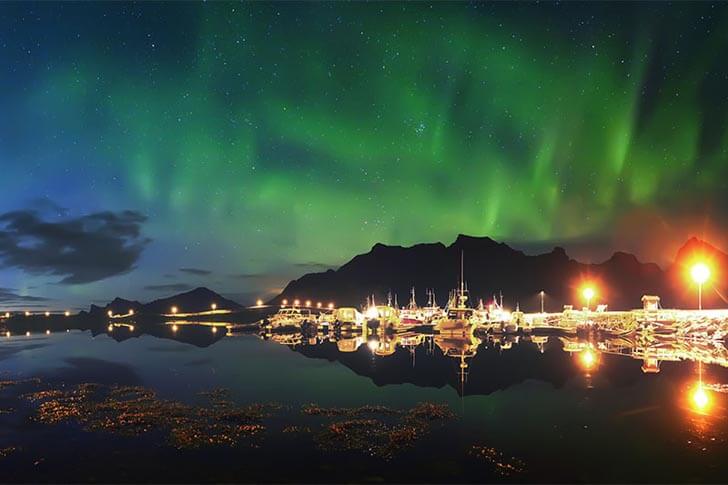
You can take a Northern Lights tour in Iceland, but it’s often more fun to try and chase them down on your own. Try the historic þingvellir National Park, the Westfjords, or northern Iceland. The latter experiences extra hours of darkness and usually yields additional opportunities to experience that magical curtain of lights.
Although there are some stunning places to see the aurora borealis in Iceland’s countryside, you can also see them from Reykjavik. Head to an elevated area like Grótta situated at the tip of the Seltjarnarnes peninsula. You can also try the wooded area of Öskjuhlið, where the Perlan exhibition and planetarium lies. If the building is open, head to the observation deck to warm-up and watch for the Northern Lights to dance by.
Soak in the Hot Springs
Icelandic hot springs are still toasty during wintertime and offer a unique way to warm up your core. The Blue Lagoon is the most popular spot where tourists and some locals soak in the geothermal spa, whether it’s snowing or not. You can also add the Nature Baths in Mývatn or Fontana Geothermal Baths near Laugarvatn Lake. If you’re headed to the whale-watching capital of Húsavík, make time to see the Geosea Sea Baths in the whale watching capital of Iceland.
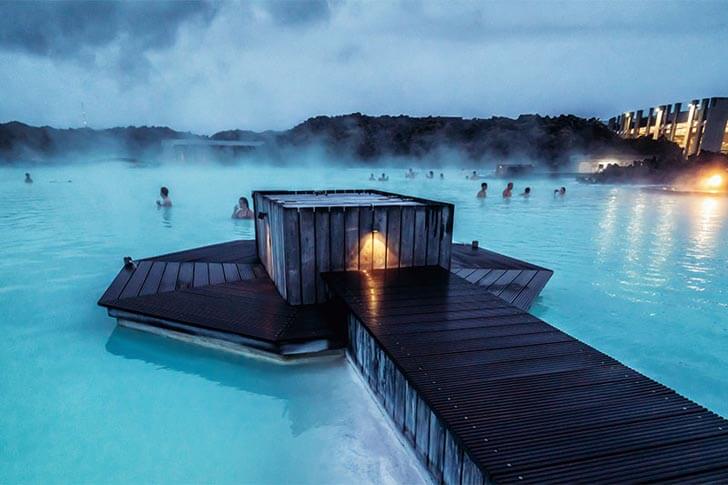
If you’re not up for venturing outside of Reykjavik, you can also take a heated dip in one of their public swimming pools. It’s a wonderful way to relax and meet the locals before heading out for drinks or a bite to eat. Pools in Iceland are generally open year-round, but check the schedule before you go, as they reduce their hours during the Icelandic winter holidays and festivals.
Get Camera Happy
Did I mention Iceland looks like a winter wonderland that rivals anything you’ve seen in a storybook? This is coming from someone who lives in Atlanta, where locals sled on fake snow at area attractions unless there’s a freak snowstorm.
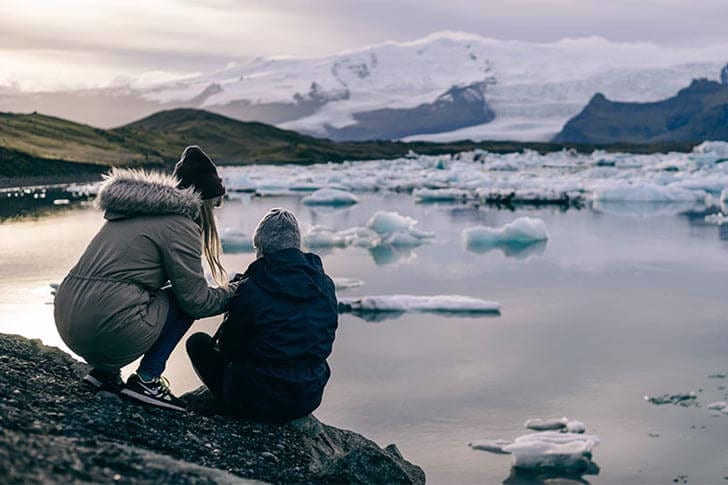
Get your camera ready and prepare to fill your Instagram feed with enough Icelandic winter fodder to last the rest of the year. The lack of daylight hours indeed makes snapping photos more challenging. Yet that natural light hovering just above the horizon also provides a soft, glowing backdrop for your photos. Taking photos around Iceland’s countryside and the Golden Ring is a must, but capturing the winter festivities around Reykjavik are also vibrant.
Have a Back-up Plan
We already talked about getting inspired by Iceland’s fierce ability to adapt; however, that’s a little different than having a back-up plan. You need both to handle an Icelandic winter.
Brainstorm a few go-to ideas to keep your trip running smoothly. If you can’t leave the campground, venture out to the common areas like a cafe to meet fellow campers. Or if you know a storm is coming, stay near Iceland and see what types of restaurants, pubs, and bookstores are still open.
Plan a few indoor activities like exploring like the Reykjavik Maritime Museum, Reykjavik Art Museum, National Museum of Iceland, to name a few. House parties are also a fun way to pass the time if you can score an invitation, as well as taking in a concert at the Harpa Reykjavik Concert Hall.
Handling an Icelandic winter requires patience, tenacity, and an adaptable constitution. You can’t rush an Icelandic winter or the Northern Lights, so you might as well make the most of your time regardless of what the cold weather brings.
Looking for some more Iceland winter trips? Check out our Winter Camping in Iceland Guide.
Back